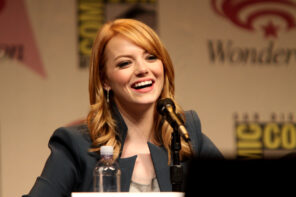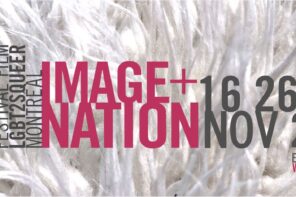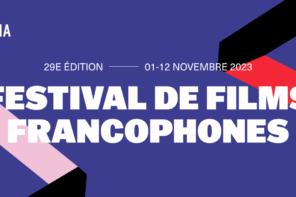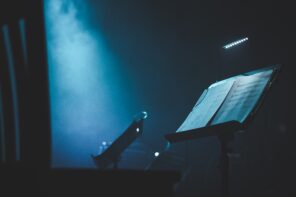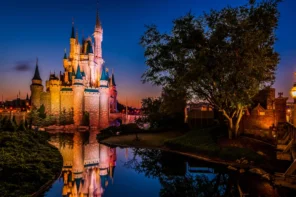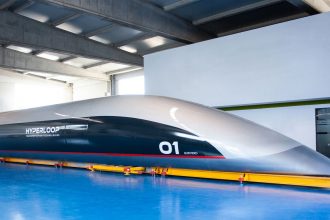There’s always a fair amount of danger in writing a sequel or making a remake of a beloved cult film 30 years after the original was released. Remember that RoboCop remake? That new version of The Thing? That Terminator movie whose only redeeming quality was that it starred a Targaryen? The list goes on. Still, in spite of all the failures, there’s a small list of successes. Just last year, Mad Max: Fury Road made its mark not just as a sequel to an old franchise, but as a filmmaking achievement of its own right, a gorgeous and fascinating visual spectacle. This year, there may be another film to add to the list of successful reboots: Dennis Villeneuve’s Blade Runner 2049.
The film offers a breathtaking return to the rain-soaked streets of LA that were first seen in 1982’s Blade Runner, offering beautiful production design, cinematography and set of new characters who have the chance to step foot in the Blade Runner world. It’s as much a sequel as it is an homage, bringing back plenty of memories from the original film while also infusing it with plenty of new vigor.
2049 represents a distinct artistic vision from director Dennis Villeneuve and cinematographer Roger Deakins. Perhaps one of the most notable differences between the original film and the new one is its sleek, finely tuned look. Whereas Blade Runner views the world through a hazy lens, 2049 just, well, doesn’t.
Every shot is sharply focused, with slow and deliberate camera movements. This isn’t the style of the original Blade Runner, rather, it’s the style of the films of Villeneuve and Deakins. The style of Villeneuve’s other films, like Sicario and Arrival, is distinctly separate from other modern blockbusters. The films use long takes, offering shots that give the viewer a chance to really take in their surroundings. They’re clean palates where every element is perfectly placed, using long lenses to bring the viewer close in with their surroundings, forcing them to focus in on certain subjects. For 2049, this style works brilliantly, giving much needed attention to the wonderful details of the production design.
Though both films are police procedural dramas, Blade Runner was a sci-fi noire, while 2049 drops the intensity in favor of becoming a sci-fi epic, its beauty emanating from the style of its creators as opposed drifting into the territory of remaking the original.
The slow, careful shots add beauty to 2049, making it an almost moving work of art. But at the same time, it feels distinctly separate from the original Blade Runner, whose cinematography found beauty in far different areas. The original obscures its characters in their environment, immersing them in their surroundings. The ever-present rain and smoke makes the film feel like it takes place in a dream or underwater, allowing for a world that, while drastically different from our own, felt somehow completely familiar. 2049 turns this idea on its head, finding beauty in the scenery it creates. As a result, the visuals of 2049 make the film feel less like a true sequel to Blade Runner and more so a Denis Villeneuve film living in the same dystopian society.
Villeneuve’s style prevails over the entire movie, extending not just into the visuals but also into the score and thematics. The deep, wordless vocals from Arrival make a comeback in Zimmer’s score, adding depth to the sounds of the film. Whereas Blade Runner can almost feel like a thriller, building tension throughout the movie and particularly through the film’s third act, 2049 is a slow, pacing journey through a futuristic vision of California. Though both films are police procedural dramas, Blade Runner was a sci-fi noire, while 2049 drops the intensity in favour of becoming a sci-fi epic, its beauty emanating from the style of its creators as opposed drifting into the territory of a remake.
Even considering the personal and artistic freedoms Villeneuve takes in 2049, the film remains an ode and a respectful homage to the source material. Outside of its central theme, a meditation on what really defines humanity that directly refers back to the first film, the sequel’s sensorial identity takes its roots directly in its thirty-year-old elder.
Viewers should not expect an adrenaline-fueled action movie, as 2049 is in the direct continuity of the first movie: it adopts a contemplative and thoughtful rhythm, which is intersected by rare scenes of extreme violence, almost evocative of the replicants’ sudden and unexpected brutality
2049’s most blatant link to the original movie is its stunning cinematography. The prevailing cold, appeasing and electric blue tone, a major component of the film’s identity, is a direct evocation of the first movie’s neon and rain soaked visuals. The visual similarities don’t stop there, as both movies rely on a disproportionate relationship between their characters and the settings they evolve in. This unsettling sense of scale, visible through the first Blade Runner’s depiction of giant and imposing urban landscapes, is used by the sequel and extended to other backgrounds as well: kilometres of breaking waves and abandoned ruins, where humans and androids alike seem tiny and fragile.
A dystopian and melancholic vision of the future, where innovation and decay stand alongside each other, looms over both movies, as overcrowded energetic metropolises with endless and radioactive ruins. Fans of the first movie will be pleased to see that some shots are direct callbacks to the original. These are either a direct copy, such as the opening close-up on a replicant’s eye, or subtle references, like the prostitute’s outfit and ever-present noodle dishes. Both movies have a handful of memorable and beautifully poetic scenes that will mark viewers long after the end credits, all sublimed by the stunning camera work. The dystopian vision is further depicted through Hans Zimmer’s soundtrack, reminiscent of the first movie’s original score. The modern and epic synth-heavy melodies, suiting the futuristic atmosphere with their metallic and industrial tone, directly reference the original film’s eerie and contemplative themes.
With 2049, Villeneuve offers a film that packs a punch not because of its brand recognition, but because it’s a spectacle in and of itself.
Viewers should not expect an adrenaline-fueled action movie, as 2049 is in the direct continuity of the first movie: it adopts a contemplative and thoughtful rhythm, which is intersected by rare scenes of extreme violence, almost evocative of the replicants’ sudden and unexpected brutality. However, the two movies differ in their narrative structure. The original film was based around Deckard’s hunt of several deviant replicants – a slow investigation that advanced each time a target was shut down or a major clue was found. The sequel starts on the same path, but adopts a more mainstream structure as the film goes on, where side plots and frequent twists appear along the main storyline.
These twists and side plots invoke criticisms of 2049 that echo the original criticisms of Blade Runner. In spite of the beauty of the world, the characters and plot that inhabit it aren’t nearly as compelling. In fact, the production is practically the only thing that holds the entire film together. Luckily, the production reaches near perfection, and the lukewarm plot can take a backseat to the visuals the film offers.
2049’s overall tone also shows glimpses of hope amidst its bleak atmosphere, which contrasts with the original’s tense and dark ambiance, devoid of optimism. From this perspective, viewers repelled by Blade Runner’s slow pace and dreariness will have an easier time appreciating 2049, even though its nearly three-hour long runtime will seem lengthy if you don’t buy into the movie’s themes and setting.
These qualities give Blade Runner a wonderful return to form, even if that return to form isn’t a perfect homage to the original. With 2049, Villeneuve offers a film that packs a punch not because of its brand recognition, but because it’s a spectacle in and of itself. So it doesn’t matter that 2049 isn’t a remake—in fact, it’s a good thing—because it adds to the Blade Runner cannon a stunning new look into a world created 35 years ago.


